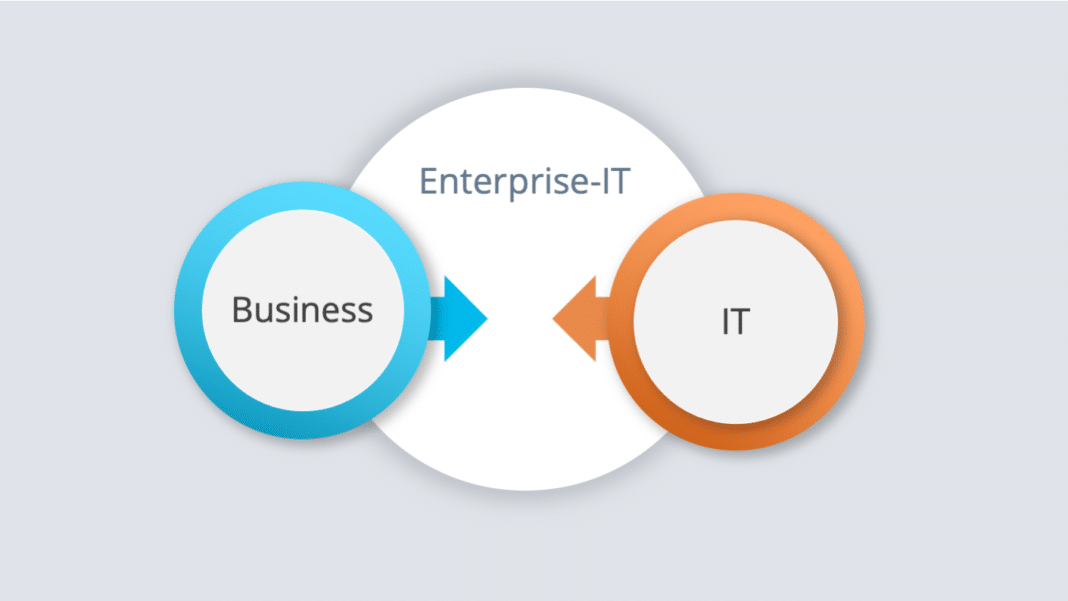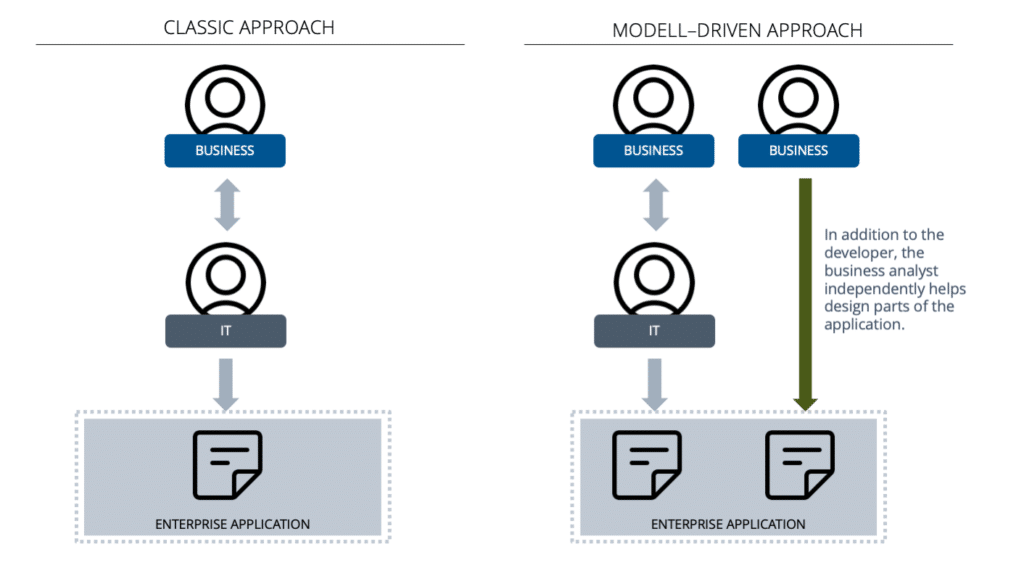Low code as a development principle is replacing costly and slow software development approaches. Even enterprise applications that are highly complex and fulfil business-critical tasks can be designed and adapted by departments using model-driven methods and tools.
In short
- Business experts become co-developers
- Functionality and technology can be developed separately
- Plasma design system allows user-friendly design of enterprise application by business experts
Whitepaper about Low Code for individual enterprise software
As a software company mgm has been developing individual enterprise software for more than 25 years. The core idea of A12 goes back to a series of recurring observations from the most diverse projects. A12 is an enterprise low code platform for the development, integration, maintenance and operation of enterprise applications in complex IT landscapes. It combines a low code approach, where business experts can create an application without programming knowledge, with professional individual software development and system integration.
This is an excerpt from the white paper “A12 Low Code and Co-Innovation for Individual Enterprise Software”. The whole whitepaper can be downloaded here.
Business analysts and technical experts as co-developers
In classic development processes, business analysts first clarify the requirements for the software to be developed with the business department. They then describe the requirements in a form that is passed on to the development team. This classic form of requirements analysis remains in place for projects that rely on A12 – albeit to a lesser extent. But there is another role to play: business analysts and technical experts are able to design and adapt large parts of the application independently using modelling tools. They are given a completely new scope of design.
In most projects mgm provides the business analysts as part of the development team. This has the advantage that they are already familiar with the modelling tools and techniques. Customer’s business experts are usually involved at the beginning of a project. After an introduction to the modelling tools, they are able to adapt essential parts of the application independently.
Modelling of business expertise and application logic
An essential modelling task is the definition of business entities and their relations to each other in data models. Using a modelling tool, business analysts and business experts can create and adapt the data structures of mapped entities such as contracts or products. In addition, they can define validation rules and calculations using an integrated kernel language – in other words: map the application logic. Relationship models can be used to describe links between data models.
By modelling the business-specific aspects, business expertise and technology are separated. Business content can be adapted without major technical adjustments. The technology can be further developed without having to adapt all technical content. We are convinced that this separation of business and technical aspects will shape the future of enterprise software. It accelerates development, avoids costly reimplementation and enables rapid adaptation to changes.
Modelling of user interfaces
Based on the data models, business analysts are able to create user interfaces with the modelling tools of A12. A number of special models are available for this purpose:
- An app model defines the framework of the application and acts as a kind of container for all other models.
- Overview models offer a variety of options for tabular presentation of data.
- Tree models allow data structures to be displayed and edited hierarchically
- Form models define the structures and contents of online forms
The modelling does not follow a what-you-see-is-what-you-get principle. Instead, the models describe the underlying structures of the user interface. This has the advantage that the models are in turn independent of the technical implementation.
The plasma design system is used for the actual display. It ensures a coherent presentation and a coherent user experience.
A uniform, standardised user interface can be ensured by a modelling approach that combines models for central aspects of the user interface such as forms with data models.
Read the whole whitepaper now and learn more about innovative software development based on Enterprise Low Code. Download it here.








